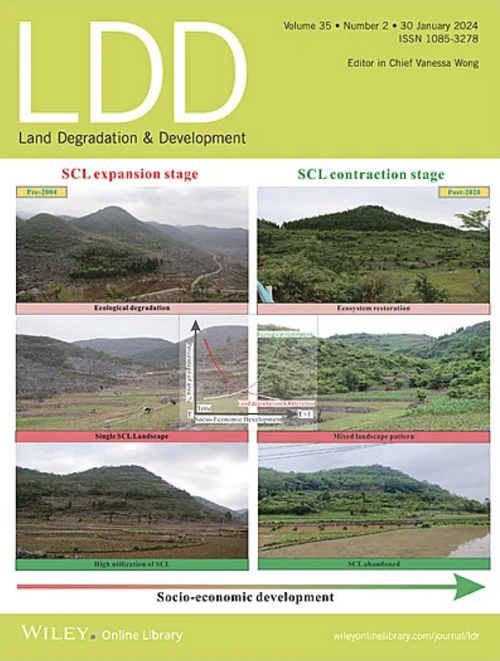Multi-Scenario Simulation of Land Use Changes and Their Ecological Risk in the Global Largest Inland Arid Urban Agglomeration
IF 3.6
2区 农林科学
Q2 ENVIRONMENTAL SCIENCES
引用次数: 0
Abstract
Rapid global urbanization had significantly altered land use (LU), threatening the ecology and sustainability of arid regions. Systematic and forward-looking analyses of land use changes (LUCs) and ecological risks in Asia's arid zones, particularly the urban agglomeration on the northern slope of the Tianshan Mountains (UANSTM), remained limited. Herein, the LUCs in UANSTM under four scenarios, including the ecology-economy balanced development scenario (EES), ecological protection scenario (EPS), economic development scenario (EDS), and natural development scenario (NDS) in 2030, was predicted by employing the PLUS model and the multi-objective programming (MOP) model. Then, an evaluation system was developed from the dimensions of urban expansion, ecological risk, food demand, and ecological degradation to assess the corresponding ecological risk in each case. The results showed that: (1) Under each scenario, desert bare land and grassland were found to be the main LU modes in UANSTM, with a significant increase in cultivated land and negligible change in water and forest; (2) the grassland area decreased under the NDS scenario, while the areas of grassland, forest land, cultivated land, and construction land increased under other scenarios, especially from unused land and grassland; (3) LU-induced ecological risks under these scenarios showed similarities, with overall high ecological risks. Among them, 52.04% of the areas were found to be at high and relatively high-risk levels, and only 2.97% were at low-risk levels. This study reveals the diversified risks of LUCs under different scenarios, thereby facilitating the individualized planning of environmental protection and ecological restoration in the UANSTM.求助全文
约1分钟内获得全文
求助全文
来源期刊

Land Degradation & Development
农林科学-环境科学
CiteScore
7.70
自引率
8.50%
发文量
379
审稿时长
5.5 months
期刊介绍:
Land Degradation & Development is an international journal which seeks to promote rational study of the recognition, monitoring, control and rehabilitation of degradation in terrestrial environments. The journal focuses on:
- what land degradation is;
- what causes land degradation;
- the impacts of land degradation
- the scale of land degradation;
- the history, current status or future trends of land degradation;
- avoidance, mitigation and control of land degradation;
- remedial actions to rehabilitate or restore degraded land;
- sustainable land management.
 求助内容:
求助内容: 应助结果提醒方式:
应助结果提醒方式:


